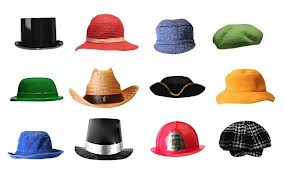Using colour in the classroom to trigger memory is nothing new, as teachers we know there is a link.Keep a close eye on this research published in Discover Neurology The Observer 27th April 2014. There is definitely something cognitive that we can all transfer into our teaching, our own learning, and a whole host of revision techniques – especially with the 2015 changes where strategies for recall and memory are going to be the skills that we need to impart.
Memory failing you? Then try listening to colours is the headline that caught my eye in the science supplement of The Observer. I have always been fascinated with triggers for memory. If I am totally honest, colour coding is not for me, I don’t think that way. But I have many friends and colleagues and ex students who are fixated with the need to categorise by colour. My own personal fixation is music. My memories are always triggered by music. The songs I love (and sometimes hate!) are not based on their musical merit, but on whether at that point in my life I was/was not enjoying myself. I still remember realising the Spice Girls had achieved world domination when we were sitting in a camp in the Venezuelan rain forest when ‘Wanabee’ came on the radio, or when walking down the Strip in Las Vegas at night ‘Penny Lane’ was playing, and we were moving to Penny Lane on our return from our travels. My worst nightmare as far as music is concerned is Enya, for some inexplicable reason our local swimming pool has resurrected ‘Sail Away’ on loop, it is absolute torture to me – yet my friends barely notice it. I have many a happy and sad memory where a song can trigger my thoughts. Apparently, for 4% of the population it is colour that impacts on their mind,
Synaesthesia
I have never been an obsessive music lover, there was never enough room in my brain, reading has always been at the very top for me, but I do love music. I also love using music in my teaching – especially as hook into poetry for students. It is also useful as a cultural link to help students engage with a topic that they may feel is totally alien to them. You can always find an excuse to play some music for the students, with the brilliant accessibility of You tube, you can find anything! It appears using colour could also be the way forward. Helen Massy –Beresford reports that ‘Only 4% of people have synaesthesia, the mysterious condition that blends the senses. But research is beginning to show that developing it in the rest of us may improve learning, aid recovery from brain injury and guard against mental decline in old age.’
Dr Nicolas Rothen states that” Ten to 15 years ago, researchers were mostly concerned with showing that synaesthesia was real and not just metaphorical thinking. Now it is basically accepted that synaesthestes perceive the world differently and we are asking how this relates to other cognitive functions.” Massy –Beresford has a very personal take on the study when she shares her own situation with the reader. She states that ‘I’ve always known that the letter M is navy blue, July is a nice, bright red, Saturday is a pale pea green, four is mauve…’’ she declares that it was only when she studied the poet Rimbaud at University that she realised that other people did not see the world in this way. I can honestly say it has NEVER crossed my ,mind to associate colours with anything much – except the glaringly obvious, but I do think it is fascinating that this is how others think.
In relation to how we teach I think this is particularly pertinent. I do encourage colour coding for applying different ideas to literary texts. I have also taught students to use mind maps for revision, where the basic premise is that a particular colour represents a particular area for study, for example red represents the themes in the novel. There is also the strategy of the Six Thinking Hats devised by Dr Edward de Bono where a different colour hat is symbolic of a different mode of thinking. These are all thoughtful and engaging ways of teaching memory for students. Nevertheless, what struck me from the article is that if we are to truly engage synaesthete students, we need to allow them to select the colours that mean something to them, imposing the colours on them could reduce their ability to use this skill to its full effect. Dr Rothen reminds us that “People are different.. and we need to consider those individual differences. Synaesthesia is a neat way to study differences in perception and their relation to higher cognitive functions such as memory and language functioning.” We need to celebrate and promote the differences, as opposed to enforcing the norm.
Primary research
How about you complete a mini survey amongst your students or staff and try and establish who does in fact associate colour with thoughts and language? It could make the 4% difference in attainment, and provide you with an engaging tool to support learning.
C Thomas – April 2014



